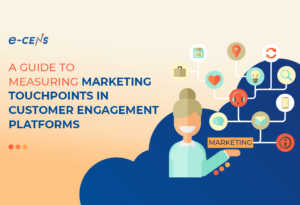Avoiding Mobile Analytics pitfalls is part of the challenge that businesses face now that Mobile Analytics is gaining traction. If your business is ready to take your first step, this article explains how to go about implementing Mobile Analytics, and cautions against the 4 common Mobile Analytics pitfalls businesses make when they first start out.
Table of Contents
Develop Your Business with Mobile Analytics
Ever since the use of mobile phones first surpassed laptop and desktop computers back in 2016, the reliance on mobile devices hasn’t stopped growing.
According to a recent report, 68% of all website traffic in 2020 came from mobile devices. Other research has also shown that globally, the average time spent on mobile apps was 4.2 hours per day in 2021 (according to App Annie), up by 30% from 2019.
With the growth of mobile use, the ways users engage with a brand have also changed notably – it might suffice to say the average time on page for a website is measured in seconds, while the average app session length is measured in minutes. This suggests that many marketing teams have successfully avoided those Mobile Analytics pitfalls.
However, with more than 3000 apps launched every day, winning the war for attention is growing harder with each passing moment.
In recent years, enterprises have had to significantly recalibrate their marketing efforts and adopt a ‘mobile-first’ approach in order to meet their customers’ increasingly sophisticated needs.
This is where Mobile Analytics comes into play.
What is Mobile Analytics?
Mobile Analytics is a multi-layered process of collecting user behavior data, which is then interpreted to provide crucial business insight.
Mobile Analytics begins with tracking simple data points: download rate, session length, in-app purchases, device details, number of daily or monthly users, crash points, etc.
After extracting this information, data analysts can weigh in on important performance indicators, such as:
- engagement,
- retention,
- attribution, and so on.
Such Mobile Analytics metrics provide you with invaluable information on your customer base, its behavior, and how it affects your performance.
The Importance of Mobile Analytics
You may find it surprising, but many organizations have been slow to adopt Mobile Analytics. This results in a lack of insight into how customers interact with their brand. This lack of data obscures performance issues, which significantly slows down growth efforts – as it becomes harder to understand which marketing strategy is the best way forward.
While many companies have robust Web Analytics, the failure to implement Mobile Analytics results in fragmented data. Customer behavior means that people often interact with your brand from different devices at different times of the day. Therefore, any insight gathered from exclusively one device type makes your pool of information incomplete.
Having just one-half of the equation will inevitably hinder decision-making and future plans. With data not in sync, customer journeys become hard to reveal to the developers and marketers, leading to ill-informed development and expansion efforts.
With a well-equipped Mobile Analytics provider and a comprehensive plan, companies can choose which key metrics to focus on in response to larger market trends and quarterly results – speeding up their growth and boosting customer retention.
The importance of investing in Mobile Analytics is increasingly recognized, thanks to its role in both product optimization and effective marketing.

Mobile Analytics: Where to Start?
When your app is in development, then crash metrics are vital. Once you are in production, then the metrics to watch for include:
- engagement
- retention
- churn rates
- in-app purchases
- average session lengths
Add to this monthly and daily active users (MAUs and DAUs), the number of downloads, and cohort analysis (to mention just a few KPIs), and the diversity and quantity of data will certainly, at first, seem formidable.
However, there are readily available and intuitive app analytics tools that help you keep track of it all.
To fully employ all that Mobile Analytics can offer you and be future-ready, our experts at e-CENS recommend adopting a three-tiered toolkit, which consists of:
1. User behavior analytics
Tools such as Firebase support anyone looking to apply effort to their Mobile Analytics and understand their users’ behavior. Firebase is a highly-customizable tool that collects event-based data to provide deep insights into how your customer base is segmented, plus information on crash data, in-app purchase statistics, some attribution insights, and more.
2. Attribution
Learning more about your specific conversion touchpoints is simplified with tools like Adjust or Branch. Attribution data is crucial for customer journey insight; it’s also useful for examining customer churn or subscription performance. Attribution tools help you understand your audience and its habits outside of just your app – in order to better cater to their needs.
3. Customer experience management
If the in-app data analytics reveal some level of customer dissatisfaction or drop-off in engagement, that’s when it’s time to turn to customer experience management tools. Solutions like MoEngage help you decide which experience enhancement strategy to apply: from turning up the volume on push notifications to total user personalization. Tailoring the experience to your customer is a sure way to boost satisfaction and increase your retention rates.
Four Common Mobile Analytics Pitfalls
While analyzing your data and turning it into actionable insights might seem intuitive, it’s actually easy to make misdirected calls.
Make sure to watch out for these common analytics pitfalls:
- Cognitive bias. Data interpretation calls for maximum objectivity. It does not matter how much hard work you’ve put into hitting a specific target (for example, a rise in acquisitions) – the result of your effort still might not be reflected in the data. At that point, the issue needs to be acknowledged and addressed – not ignored.
- Vanity metrics. If your download rates tower over your DAU and MAU numbers, that’s definitely not a good sign – no matter how great the downloads graph might look at first glance. Instead of examining your metrics individually, examine their role in the larger context.
- Relying on single-platform analytics. Due to the increased accessibility of the internet, users engage with brands in a variety of ways today. A link might take them to the website, but they might want to open the app on their phone instead for the improved UI. Once home, they might revisit the website from their desktop computer for an extended, more focused browsing session. All of this data is equally valuable – aggregating it across platforms is necessary for a comprehensive overview of your customers’ profiles.
- Lack of clear goals. If you harness the power of data intelligence without setting straightforward objectives, you’re likely to get lost in the vast amounts of graphs and charts. Use and apply your knowledge to explicit issues. For some, that can be short session lengths; for others, low conversion rates.
Interpreting Data is Key to Overcoming Mobile Analytics Challenges
While many choose to implement Mobile Analytics only after their app has gained some traction, it’s important to remember that data interpretation is there to guide you each step of the way.
Once you hit your first download marker and gain active users, you’re already working with significant information points.
By making actionable insights your priority, you’re able to understand and extract value from your customer base’s choices and encourage its growth.
Interested to Learn More About what Mobile Analytics could Mean to You?
We are not impartial observers of the Mobile Analytics ecosystem. Here at e-CENS, we actively support enterprises with roadmaps to suit their budget and aims. It is vital to partner with an agency able to implement an effective Mobile Analytics strategy that will provide you with user insights to support your app development for the years ahead.
The essential guide to Mobile Analytics: eBook
Get the most out of mobile analytics with e-CENS’s essential guide on their most crucial benefit in today’s app-based market economy: instant insight into your App’s performance.





